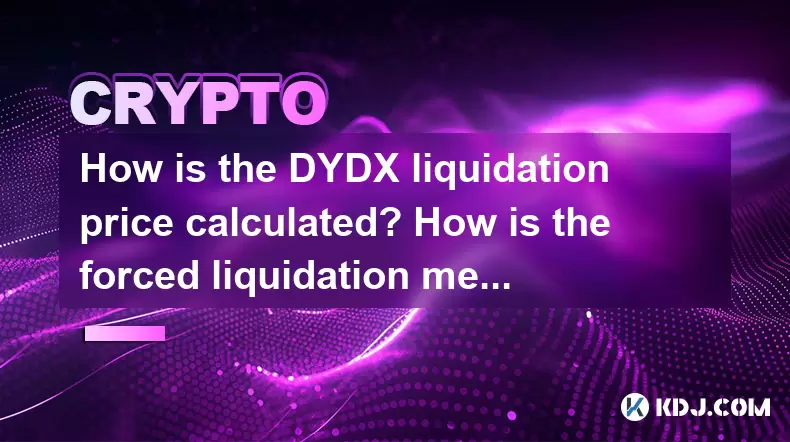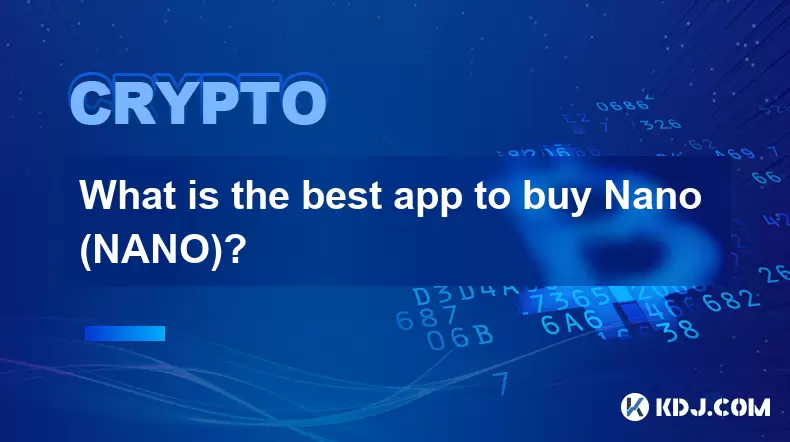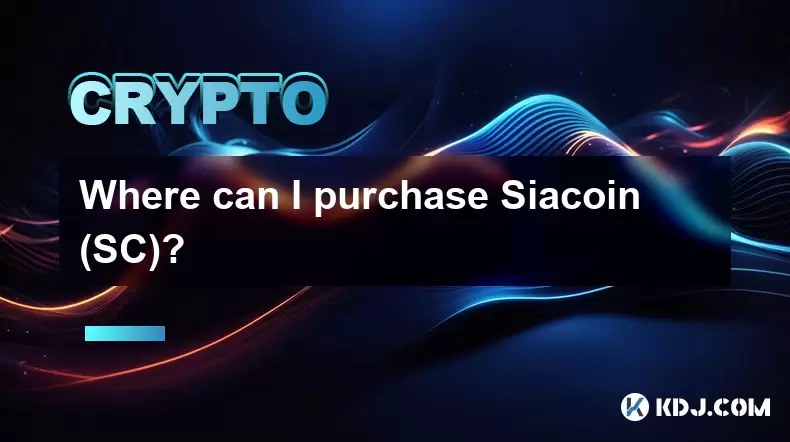-
 Bitcoin
Bitcoin $118300
1.01% -
 Ethereum
Ethereum $4215
0.69% -
 XRP
XRP $3.198
-3.83% -
 Tether USDt
Tether USDt $1.000
-0.01% -
 BNB
BNB $803.4
-0.53% -
 Solana
Solana $180.3
-0.67% -
 USDC
USDC $0.9998
-0.01% -
 Dogecoin
Dogecoin $0.2334
-1.49% -
 TRON
TRON $0.3394
0.86% -
 Cardano
Cardano $0.7980
-1.45% -
 Chainlink
Chainlink $22.19
6.65% -
 Hyperliquid
Hyperliquid $43.41
0.13% -
 Stellar
Stellar $0.4407
-3.13% -
 Sui
Sui $3.843
-2.24% -
 Bitcoin Cash
Bitcoin Cash $564.7
-3.74% -
 Hedera
Hedera $0.2588
-3.41% -
 Ethena USDe
Ethena USDe $1.001
0.00% -
 Avalanche
Avalanche $23.64
-3.37% -
 Litecoin
Litecoin $120.0
-4.01% -
 Toncoin
Toncoin $3.342
-1.11% -
 UNUS SED LEO
UNUS SED LEO $9.038
0.60% -
 Shiba Inu
Shiba Inu $0.00001347
-0.81% -
 Uniswap
Uniswap $10.69
-4.58% -
 Polkadot
Polkadot $4.034
-1.30% -
 Dai
Dai $1.000
0.01% -
 Bitget Token
Bitget Token $4.472
-1.52% -
 Cronos
Cronos $0.1571
-3.04% -
 Pepe
Pepe $0.00001207
-2.21% -
 Monero
Monero $273.8
-3.19% -
 Ethena
Ethena $0.7520
2.75%
How is the DYDX liquidation price calculated? How is the forced liquidation mechanism?
The DYDX liquidation price is calculated using position size, entry price, and maintenance margin, triggering forced liquidation to prevent excessive losses on the dYdX platform.
May 08, 2025 at 06:49 am

The DYDX liquidation price and the forced liquidation mechanism are crucial aspects of trading on the dYdX platform, a decentralized exchange that allows users to trade perpetual contracts. Understanding these concepts is essential for managing risk and maximizing potential returns. In this article, we will delve into the details of how the DYDX liquidation price is calculated and how the forced liquidation mechanism works.
Understanding the Basics of DYDX Perpetual Contracts
Perpetual contracts on the dYdX platform are a type of derivative that allows traders to speculate on the price movements of cryptocurrencies without owning the underlying asset. These contracts do not have an expiration date, and traders can hold positions indefinitely. However, to manage risk and ensure the stability of the platform, dYdX implements a liquidation mechanism.
What is the Liquidation Price?
The liquidation price is the price at which a trader's position is automatically closed to prevent further losses. This mechanism is designed to protect both the trader and the platform from excessive risk. When a trader's position reaches the liquidation price, the platform will liquidate the position to cover the losses.
How is the DYDX Liquidation Price Calculated?
The calculation of the DYDX liquidation price involves several factors, including the trader's position size, the entry price, and the maintenance margin requirement. Here is a detailed breakdown of the calculation process:
Position Size: This refers to the amount of the asset being traded. For example, if a trader is long on 10 ETH, the position size is 10 ETH.
Entry Price: This is the price at which the trader entered the position. If a trader bought 10 ETH at $2,000 each, the entry price is $2,000.
Maintenance Margin: This is the minimum amount of margin required to keep a position open. dYdX sets a maintenance margin rate, which is typically around 5% to 10% of the position value.
The liquidation price for a long position can be calculated using the following formula:
[ \text{Liquidation Price (Long)} = \text{Entry Price} \times \left(1 - \frac{\text{Maintenance Margin Rate}}{\text{Leverage}}\right) ]
For a short position, the formula is:
[ \text{Liquidation Price (Short)} = \text{Entry Price} \times \left(1 + \frac{\text{Maintenance Margin Rate}}{\text{Leverage}}\right) ]
Let's consider an example to illustrate this:
- A trader opens a long position on 10 ETH at an entry price of $2,000 with a leverage of 10x.
- The maintenance margin rate is 5%.
Using the formula for a long position:
[ \text{Liquidation Price (Long)} = 2000 \times \left(1 - \frac{0.05}{10}\right) = 2000 \times (1 - 0.005) = 2000 \times 0.995 = 1990 ]
So, the liquidation price for this long position would be $1,990.
The Forced Liquidation Mechanism
The forced liquidation mechanism is the process by which dYdX automatically closes a trader's position when the market price reaches the liquidation price. This mechanism is designed to prevent the trader's account from going into a negative balance and to maintain the stability of the platform.
Here is how the forced liquidation process works:
Monitoring: dYdX continuously monitors the market price and the trader's position. If the market price approaches the liquidation price, the platform prepares for potential liquidation.
Liquidation Trigger: When the market price hits the liquidation price, the platform triggers the liquidation process. The position is automatically closed at the best available market price.
Loss Coverage: The proceeds from the liquidation are used to cover the trader's losses. If the liquidation price is not sufficient to cover the losses, the trader's margin account is used to cover the remaining amount.
Notification: The trader is notified of the liquidation, and the details of the liquidation are recorded in the trader's account history.
Factors Affecting Liquidation
Several factors can affect the liquidation process on dYdX:
Market Volatility: High volatility can cause rapid price movements, increasing the likelihood of liquidation.
Leverage: Higher leverage increases the risk of liquidation, as smaller price movements can trigger the liquidation price.
Position Size: Larger positions require more margin and can be more susceptible to liquidation.
Margin Levels: Traders need to maintain sufficient margin levels to avoid liquidation. If the margin falls below the maintenance margin, the position is at risk of liquidation.
Managing Risk to Avoid Liquidation
To minimize the risk of liquidation, traders can take several steps:
Use Lower Leverage: Lower leverage reduces the risk of liquidation, as larger price movements are required to reach the liquidation price.
Monitor Positions: Regularly monitor market conditions and adjust positions accordingly. Setting stop-loss orders can help manage risk.
Maintain Adequate Margin: Ensure that the margin account has sufficient funds to cover potential losses. Adding more margin can increase the buffer against liquidation.
Diversify: Diversifying across different assets can reduce the overall risk of liquidation.
Frequently Asked Questions
Q: Can I avoid liquidation by adding more margin to my account?
A: Yes, adding more margin to your account can increase the buffer against liquidation. If the market price approaches the liquidation price, adding more margin can help maintain the position and prevent liquidation.
Q: What happens if the liquidation price is not enough to cover my losses?
A: If the liquidation price is not sufficient to cover the losses, the remaining amount will be covered by the margin in your account. If the margin is also insufficient, the account may go into a negative balance, which is typically not allowed on dYdX.
Q: How can I calculate the liquidation price for multiple positions?
A: For multiple positions, you need to calculate the liquidation price for each position separately using the formulas provided. The overall risk of liquidation will depend on the combined effect of all positions and the total margin available in your account.
Q: Is there a way to predict when a liquidation might occur?
A: While it's not possible to predict with certainty, you can monitor market conditions and your position's performance. Tools and calculators provided by dYdX can help estimate the liquidation price and potential risk. Regularly reviewing these metrics can help you anticipate and manage the risk of liquidation.
Disclaimer:info@kdj.com
The information provided is not trading advice. kdj.com does not assume any responsibility for any investments made based on the information provided in this article. Cryptocurrencies are highly volatile and it is highly recommended that you invest with caution after thorough research!
If you believe that the content used on this website infringes your copyright, please contact us immediately (info@kdj.com) and we will delete it promptly.
- Cold Wallet's Hot Streak: Acquisition, User Growth, and How it Stacks Up Against Ethereum & XRP
- 2025-08-10 20:30:16
- DeFi, Meme Coins, and 2025: Navigating the Crypto Landscape
- 2025-08-10 20:30:16
- Cardano, Returns, and Trade Deals: A New Yorker's Take
- 2025-08-10 18:50:16
- Dogwifhat's Comeback: Solana Meme Coin Mania and Beyond!
- 2025-08-10 18:30:15
- Solana vs. Ethereum: The Meme Coin Throwdown and the Rise of Layer Brett
- 2025-08-10 19:10:16
- Solana, Exodus, and Tokenization: A New Era for Equity?
- 2025-08-10 18:50:16
Related knowledge

How to purchase Aragon (ANT)?
Aug 09,2025 at 11:56pm
Understanding Aragon (ANT) and Its PurposeAragon (ANT) is a decentralized governance token that powers the Aragon Network, a platform built on the Eth...

What is the most secure way to buy Ocean Protocol (OCEAN)?
Aug 10,2025 at 01:01pm
Understanding Ocean Protocol (OCEAN) and Its EcosystemOcean Protocol (OCEAN) is a decentralized data exchange platform built on blockchain technology,...

Where can I buy UMA (UMA)?
Aug 07,2025 at 06:42pm
Understanding UMA and Its Role in Decentralized FinanceUMA (Universal Market Access) is an Ethereum-based decentralized finance (DeFi) protocol design...

How to buy Storj (STORJ) tokens?
Aug 09,2025 at 07:28am
Understanding Storj (STORJ) and Its Role in Decentralized StorageStorj is a decentralized cloud storage platform that leverages blockchain technology ...

What is the best app to buy Nano (NANO)?
Aug 09,2025 at 03:35am
Understanding Nano (NANO) and Its Unique FeaturesNano is a feeless, instant cryptocurrency designed for fast peer-to-peer transactions. Unlike many ot...

Where can I purchase Siacoin (SC)?
Aug 08,2025 at 11:14am
Understanding Siacoin (SC) and Its Role in the Sia NetworkSiacoin (SC) is the native cryptocurrency of the Sia decentralized cloud storage platform, a...

How to purchase Aragon (ANT)?
Aug 09,2025 at 11:56pm
Understanding Aragon (ANT) and Its PurposeAragon (ANT) is a decentralized governance token that powers the Aragon Network, a platform built on the Eth...

What is the most secure way to buy Ocean Protocol (OCEAN)?
Aug 10,2025 at 01:01pm
Understanding Ocean Protocol (OCEAN) and Its EcosystemOcean Protocol (OCEAN) is a decentralized data exchange platform built on blockchain technology,...

Where can I buy UMA (UMA)?
Aug 07,2025 at 06:42pm
Understanding UMA and Its Role in Decentralized FinanceUMA (Universal Market Access) is an Ethereum-based decentralized finance (DeFi) protocol design...

How to buy Storj (STORJ) tokens?
Aug 09,2025 at 07:28am
Understanding Storj (STORJ) and Its Role in Decentralized StorageStorj is a decentralized cloud storage platform that leverages blockchain technology ...

What is the best app to buy Nano (NANO)?
Aug 09,2025 at 03:35am
Understanding Nano (NANO) and Its Unique FeaturesNano is a feeless, instant cryptocurrency designed for fast peer-to-peer transactions. Unlike many ot...

Where can I purchase Siacoin (SC)?
Aug 08,2025 at 11:14am
Understanding Siacoin (SC) and Its Role in the Sia NetworkSiacoin (SC) is the native cryptocurrency of the Sia decentralized cloud storage platform, a...
See all articles

























































































